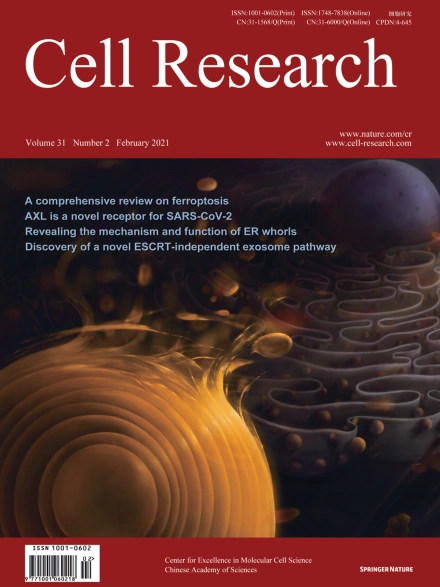
Advanced Search
Submit Manuscript
Advanced Search
Submit Manuscript
Volume 31, No 2, Feb 2021
ISSN: 1001-0602
EISSN: 1748-7838 2018
impact factor 17.848*
(Clarivate Analytics, 2019)
Volume 31 Issue 2, February 2021: 141-156 |
COPII mitigates ER stress by promoting formation of ER whorls
Fang Xu1 , Wanqing Du1 , Qin Zou2 , Yuting Wang2 , Xin Zhang1 , Xudong Xing2 , Ying Li1 , Dachuan Zhang1 , Huimin Wang3 , Wenhao Zhang1 , Xinyao Hu4 , Xin Liu1 , Xiaoling Liu1 , Shaojin Zhang1 , Jinqiang Yu1 , Jianhuo Fang2 , Fajin Li2 , Ying Zhou5 , Tieqiang Yue5 , Na Mi6 , Haiteng Deng2 , Peng Zou5,7 , Xiaowei Chen3,8,9 , Xuerui Yang2,* , Li Yu1,*
1The State Key Laboratory of Membrane Biology, Tsinghua University-Peking University Joint Centre for Life Sciences, Beijing Frontier Research Center for Biological Structure, School of Life Sciences, Tsinghua University, Beijing 100084, ChinaCells mitigate ER stress through the unfolded protein response (UPR). Here, we report formation of ER whorls as an effector mechanism of the ER stress response. We found that strong ER stress induces formation of ER whorls, which contain ER-resident proteins such as the Sec61 complex and PKR-like ER kinase (PERK). ER whorl formation is dependent on PERK kinase activity and is mediated by COPII machinery, which facilitates ER membrane budding to form tubular-vesicular ER whorl precursors. ER whorl precursors then go through Sec22b-mediated fusion to form ER whorls. We further show that ER whorls contribute to ER stress-induced translational inhibition by possibly modulating PERK activity and by sequestering translocons in a ribosome-free environment. We propose that formation of ER whorls reflects a new type of ER stress response that controls inhibition of protein translation.
https://doi.org/10.1038/s41422-020-00416-2